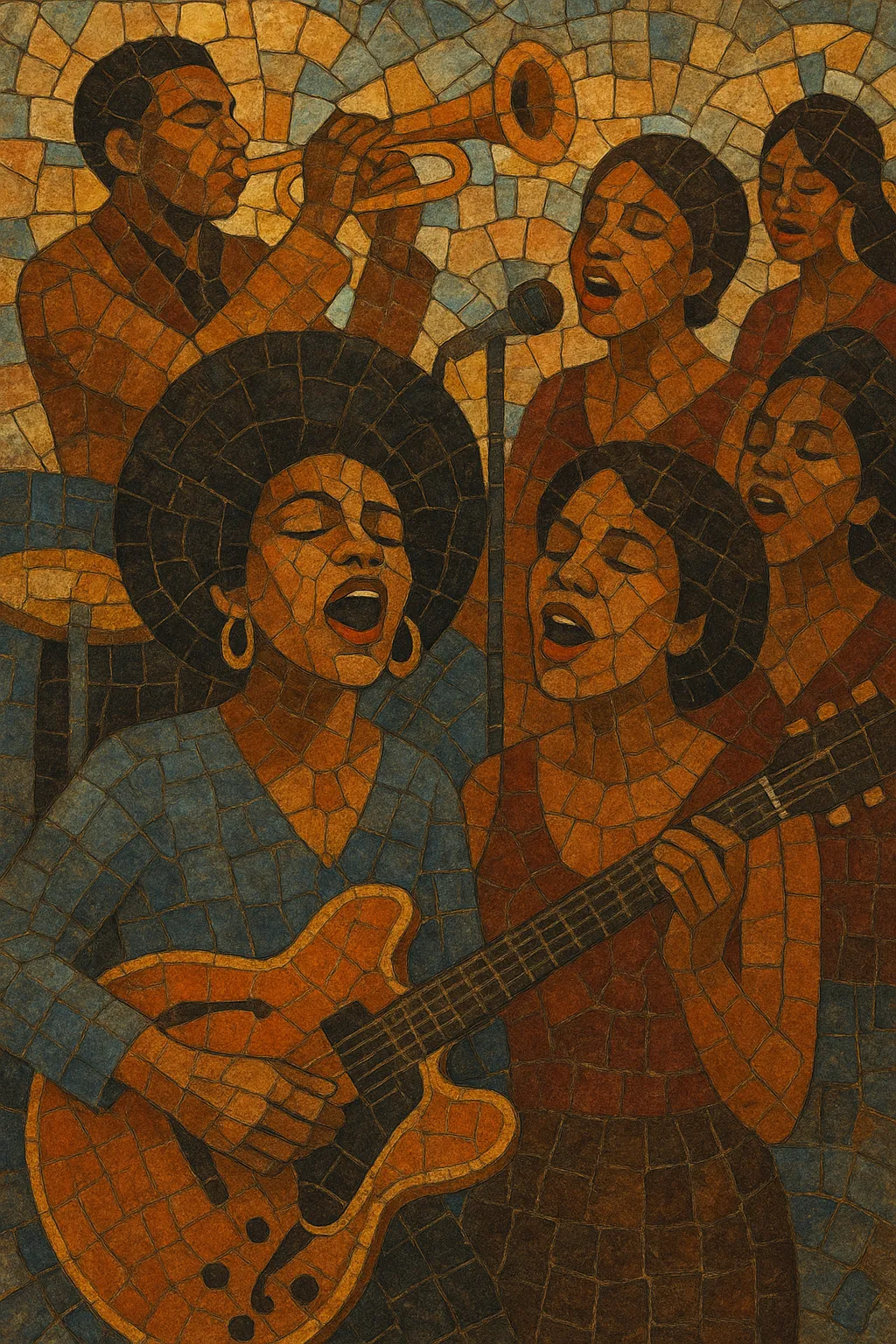Soul is a genre of popular music that blends the spiritual fervor and vocal techniques of African‑American gospel with the grooves and song forms of rhythm & blues and the harmonic palette of jazz and blues.
It is defined by impassioned, melismatic lead vocals; call‑and‑response with backing singers; handclaps and a strong backbeat; syncopated bass lines; and memorable horn or string riffs. Typical instrumentation includes drum kit, electric bass, electric guitar, piano or Hammond organ, horns (trumpet, saxophone, trombone), and sometimes orchestral strings. Lyrically, soul ranges from love and heartbreak to pride, social commentary, and spiritual yearning.
Regionally distinct scenes—such as Detroit’s Motown, Memphis/Stax, Muscle Shoals, Chicago, New Orleans, and Philadelphia—shaped different flavors of soul, while the style’s emotional directness and rhythmic drive made it a cornerstone of later funk, disco, contemporary R&B, and hip hop.
Soul emerged in the late 1950s in the United States as African‑American artists fused the vocal intensity and call‑and‑response of gospel with rhythm & blues song forms and grooves. Artists like Ray Charles and Sam Cooke translated church techniques—melisma, testifying, and communal energy—into secular songs, laying the foundation for the genre.
The 1960s saw soul become a dominant force in popular music. Detroit’s Motown crafted polished, hook‑driven hits with tight rhythm sections and sophisticated songwriting teams. In Memphis, Stax Records cultivated a grittier, gospel‑rooted sound powered by Booker T. & the M.G.’s, while the Muscle Shoals studio band developed a deep, earthy groove. Chicago and New Orleans contributed their own flavors, and labels like Atlantic helped spread the music nationally.
Soul diversified as artists explored orchestration and social themes. Philadelphia soul introduced lush strings and elegant arrangements; Southern soul emphasized raw vocals and church‑inflected intensity. Psychedelic soul and concept albums expanded the form’s ambitions. The rhythmic focus and backbeat emphasis of soul directly seeded funk, while its lush arrangements and four‑on‑the‑floor adaptations helped catalyze disco. Meanwhile, quiet storm refined soul for late‑night radio.
Soul’s vocal language, grooves, and songwriting became the bedrock of contemporary R&B and an essential sample source for hip hop. Neo‑soul in the 1990s returned to analog warmth and classic musicianship, while modern artists continue to blend soul with pop, jazz, and alternative styles. Across decades, soul remains synonymous with emotional honesty, groove‑centric arrangements, and virtuosic singing.


